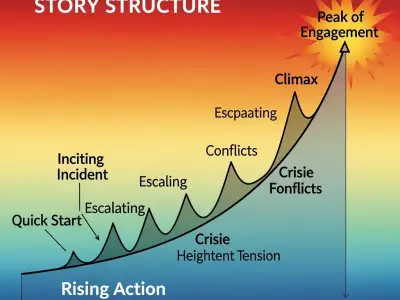The ability to predict the future is a controversial art. Some would rather not know if artificial intelligence will take over the world or if we’ll be wiped out by an asteroid. Some spend a lifetime seeking to hone their knowledge of all that has come before, in order to explore new possibilities for the future. Others look to historical analysis in the hopes of avoiding the mistakes of our past and for healing.
"Those who cannot remember the past are condemned to repeat it," philosopher George Santayana said. Indeed, with historical understanding, students gain a reasoned approach to world events and an empathetic take on sociological cause and effect.
Undoubtedly, pursuing historical knowledge is an admirable and worthy task. After all, history, they say, is the house in which all other subjects lie. But there are limitations to our methods of learning about the past. We approach the study of other people who have come before us with our own frame of reference. Indeed, some experts believe our modern historical reading of Egyptology is totally flawed, stemming as it does from a Victorian perspective steeped in racism.

Likewise, contrary to popular belief, history cannot literally repeat itself. It is a linear progression and one moment can’t exist without that which preceded it. Hence, the difficulties in constructing objective historical narratives.
However, it’s human nature to look for patterns and, depending on your perspective, they do exist. They’re especially evident when it comes to historical atrocities and hardships that are documented and remembered in our collective consciousness. Let’s take a look at some of those repeating patterns now.
Sinking Ships
Thanks to its Hollywood treatment, there are few people who aren’t aware of the tragedy of the Titanic these days. It may be one of the most famous fatal events in history, but it wasn't the first of its kind.

Ninety years before RMS Titanic sank in the Atlantic Ocean, taking 1,503 lives, the Tek Sing sank in the South China Sea on February 6th 1822 on its voyage carrying 1,600 emigrants and precious cargo such as spices and silks to Jakarta. The circumstances that led to both were similar. While the Titanic hit an iceberg that it was travelling too fast to avoid, the Tek Sing hit a coral reef while taking a shortcut through unchartered territory. Both ships were rushing to their destinations with a severe lack of lifeboats for their crammed capacity.
The sinking of the Titanic didn’t even cause the greatest historical loss of life at sea. Decades after the Titanic disaster, in December 1987, the Doña Paz ferry embarked from Leyte island bound for Manila packed with 4,000 people travelling for the Christmas holiday. Its capacity was only 1,400 people. Only a couple of dozen passengers survived — 4,375 perished — when the ferry collided with an oil tanker causing an explosion that sank both vessels in the deadliest peacetime maritime disaster.
Economic Instability
The Great Depression, which saw an estimated 13 million Americans out of work and half the country’s banks close in the decade between 1929 and 1939, wasn’t actually the first economic disaster dubbed a ‘Depression’.

Half a century earlier, in the 1870s, similar reckless decisions by the banks and crashes of markets pumped up with speculative money caused The Long Depression that affected much of the world. This economic downturn is said by some historians to have lasted two decades, catalysed by the Panic of 1873. Others have drawn sobering parallels between these two crises and modern economic instabilities, such as recent recessions and the collapse of Lehman Brothers in 2008.
Holocaust and Genocide
Before Adolf Hitler rose to power and spread his racist and xenophobic views across Nazi Germany, killing over 6 million Jews in the Holocaust and many more throughout World War Two, there had been other racially instigated genocides in history.
Up to 1.5 million people were systematically killed during World War One in the Armenian Genocide between 1915 and 1922. The Ottoman Empire ordered the brutal mass murder for no other reason than their barbaric anti-Armenian sentiment.

Just a few years before the Holocaust, in 1932-33, an estimated 7.5 million people died in the Holodomor genocide, a brutal, year-long, manmade starvation orchestrated in Ukraine by Stalin’s Soviet Union. At the same time, the Kazakh Genocide in Soviet Kazakhstan saw between 1.3 million and 1.75 million Kazakh people die from famine.
Even since the Holocaust at the hands of Nazis, millions more innocent people have died over racial and political upheaval. Over just 100 days in 1994, during a civil war, it is estimated up to 1,000,000 Rwandans were massacred in a state-sanctioned genocide, accounting for nearly 20% of the country’s population and 70% of the country’s Tutsi populace.
Pol Pot led the Khmer Rouge on a killing spree in Cambodia between 1975 and 1979, resulting in the deaths of up to 3 million people. Many were murdered in mass executions and torturous conditions, while others died from disease, starvation and malnutrition.
Extinction Events
Scientists say we are currently in the throes of the sixth mass extinction. We know this and call it as such because of our historical, geographical and biological understanding of the world around us.

Mass extinction events are when 75% of the world’s species are annihilated. The most famous is the Cretaceous-Tertiary event of 66 million years ago that wiped out the dinosaurs with a combination of volcanic activity, an asteroid and climate change. The most deadly, the Permian mass extinction 250 million years ago, wiped out 96% of all species. It’s known colloquially as The Great Dying.
Mass extinction events, scary though they may sound, are naturally occurring events in the grand scheme of the universe. Some scientists have used historical data to hypothesise that they happen in patterns of every 27 million years. It’s worth noting, of the major five mass extinction events, the shortest time span between them was approximately 50 million years.
However, the latest event in our Holocene era is happening more rapidly than ever known due to human activity — despite the fact that history has shown us what such an event might look like.

Predicting the Future with Historical Data
There’s a fascinating new take on historical analysis dividing opinion across university campuses and lecture halls. Just as cosmologists can predict the rate of expansion of the universe by using empirical data, some thought-leaders believe a pattern of historical laws has emerged from mapping historical data of the world.
Of course, many historians would shy away from the idea of putting the people, places and things from the past into an Excel spreadsheet, saying data can’t account for the nuance of historical study, nor predict what might happen in the future.
Peter Turchin, a Russian-born professor at the University of Connecticut, says differently. The scholar has collected data from 10,000 years of world history — from 414 societies across 30 global regions accounting for differing social complexities, moralities, beliefs and religion — and used it to garner some predictions about what the future holds. According to The Atlantic, it’s a mathematical revolution in examining historical and archaeological data.

Using the database back in 2012, Turchin predicted 2020 would see widespread civil unrest in America because the historical data showed him widespread civil unrest due to elite overproduction happens in 50-year cycles with this kind of politicised violence having occurred in 1870, 1920, and 1970.
The year that was 2020 came and went and even a casual observer of the news could see the devastating state of affairs in the USA. Some started paying attention to these proposed general rules of history.
Turchin calls this new field of study and its accompanying journal, Cliodynamics, named after Clio (or Kleio), the muse of history in Greek mythology. But, Turchin’s views and methodology were — and still are — often dismissed as Nostradamus-esque vagaries.

We can be sure that history can never wholly repeat itself and it’s still the widespread belief that the past — and thus the future — cannot be understood by simply crunching numbers. But wouldn’t it be wonderful if historical analysis could help us plan for a more harmonious world?
In the meantime, we can all try our best to learn from the mistakes of the past by educating ourselves about the lives of those who preceded us.
At the time of publishing, entering the code LEARNING in the checkout will reduce the price of our
History Diploma Courses to £29.




